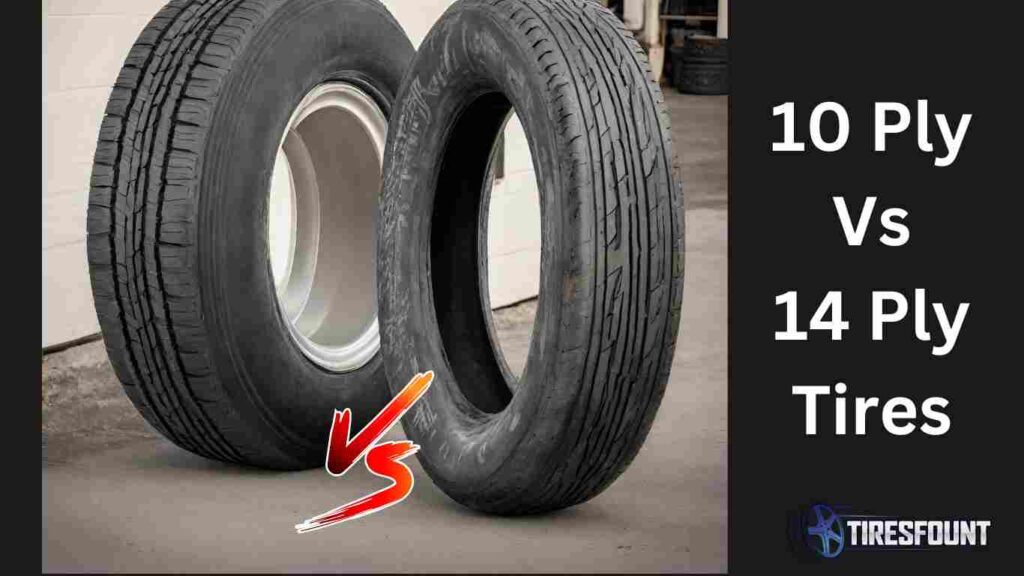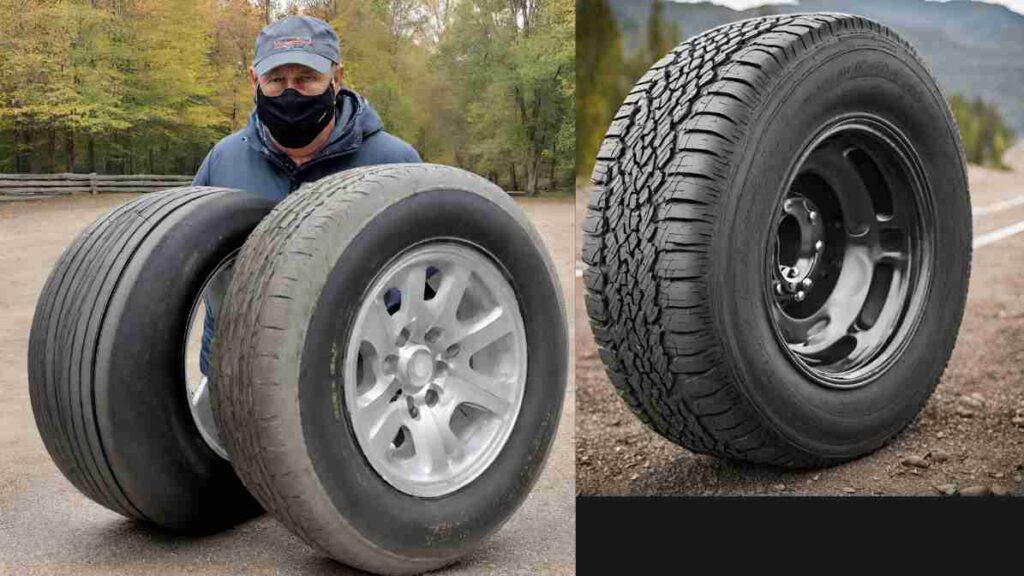The performance of a tire depends on ply rating. Manufacturers make their tires for different types of load capacity.
Based on the load capacity the ply rating changes. There are so many ply ratings, but 10 and 14 are among the most load-capable.
But, what are the differences between 10 ply vs 14 ply tires? 80 PSI is the load capacity for a 10 ply tire, while a 14 ply tire might require around 110 PSI. There are some differences between 10-ply and 14-ply tires.
In this discussion, I am going to explain all the differences between 10 ply and 14 ply tires.

You will also get an idea about which vehicle these tires fit and how you can use them. So, let’s explore the differences. Also Check 10 Ply Vs 4 Ply Comparison.
10 Ply Vs 14 Ply Tires: Main Differences
The main difference is in weight-taking capacity, but some more points will help you know about them.
| Aspect | 10 Ply Tires | 14 Ply Tires |
| Load Bearing Capacity | Lower | Higher |
| Tire Pressure | Lower | Higher |
| Ride Quality | Smoother | Stiffer |
| Durability | Lesser | Greater |
| Cost | Lower | Higher |
| Fuel Efficiency | Better | Lower |
Now let’s take a closer look.
Load Bearing Capacity
As you’ve mentioned, the big difference is the load rating. A 14 ply tire will have a higher overall load rating compared to a 10 ply tire.
This means it can bear more weight, which can be vital if the vehicle or trailer is carrying a heavy load.
Tire Pressure
The two types of tires require different amounts of pressure. A 10 ply tire might often need a lower tire pressure compared to a 14 ply tire.
For example, an 80 PSI might be ideal for a 10 ply tire, while a 14 ply tire might require around 110 PSI. This is directly related to the load they can handle – higher pressure for higher load.
Ride Quality
A 10 ply tire will generally offer a smoother ride compared to a 14 ply tire.
This is because the lower load range (and hence, lower pressure) allows for more flexibility in the tire, which can absorb road vibrations better.
Durability
14 ply tires are often more durable than their 10 ply counterparts due to their construction, that is, more layers of fabric.
They are made to handle heavier loads and tougher conditions, resulting in a longer lifespan.
Cost
Usually, 14 ply tires are more expensive than 10 ply tires due to enhanced durability and their ability to handle a greater load.
Fuel Efficiency
Generally, 10 ply tires offer better fuel efficiency than 14 ply tires due to their lighter weight.
Which Tire Is Good For Which Vehicle?
Choosing between 10 ply and 14 ply tires depends on the specific needs of your vehicle and the nature of your usage.
Let’s explore which type of tire is suitable for different types of vehicles:

Light Trucks and SUVs
10 Ply tires are often suitable for light trucks and SUVs used for daily commuting or light hauling.
But if you have a heavy-duty SUV or use your truck for towing and carrying heavy loads frequently, then 14 ply tires might be a better choice.
Heavy Trucks and Commercial Vehicles
10 Ply tires are generally not recommended for heavy trucks and commercial vehicles that routinely transport heavy goods. On the other hand, 14 Ply tires are designed for heavy-duty applications, 14 ply tires are well-suited for commercial trucks, trailers, and other heavy vehicles.
For Trailers
If you have a trailer used for light to moderate hauling, 10 ply tires should suffice.
They provide a good balance between load capacity and ride comfort, ensuring the trailer can handle various loads without compromising safety.
Trailers used for transporting exceptionally heavy loads or in rugged terrains might benefit from the extra load capacity and durability of 14 ply tires.
Off-Road Vehicles
Off-road enthusiasts who want a smoother ride and better fuel efficiency may prefer 10 ply tires.
For serious off-road applications where the vehicle is subjected to rough terrain, heavy loads, and potential punctures, 14 ply tires are a better choice.
Cost Considerations
If you are on a budget and your vehicle’s load requirements are within the capacity of 10 ply tires, they can be a cost-effective option.
While more expensive, the enhanced durability and load capacity of 14 ply tires can be a worthwhile investment for those who regularly push the limits of their vehicle’s load capacity.
Conclusion
Understanding the specific load requirements and usage patterns of your vehicle is crucial in deciding between 10 ply and 14 ply tires.
You can optimize performance, safety, and cost-effectiveness by assessing your needs.
While selecting between the two, your decision should largely depend on your specific needs in terms of vehicle load, driving conditions, and personal preference for ride comfort.
Always consult with a tire expert or your vehicle’s manufacturer for the best advice related to tire selection.
Bye!
Also Check.
